An emblematic effect if ever there was one, the wah-wah is one of those pedals that have left their mark on guitar history. It’s hard not to think of Jimi Hendrix and his legendary solo on Voodoo Child (Slight Return), or Slash, Tom Morello, Steve Vai and Kirk Hammett, all fervent wah users. With its expressive cry, this bandpass filter driven by an expression pedal creates a striking vocal effect, imitating the famous “wah”.
Mais d’où vient la wah-wah ?
The wah-wah was born in the late ’60s, originally for the trumpet… (yes, yes) before becoming the secret weapon of guitarists. It works like a dynamic EQ, emphasizing certain frequencies according to the position of the pedal. The result: a funky, bluesy or downright wild sound, depending on the style. And while Dunlop’s Cry Baby is undoubtedly the best-known, today’s market is full of models ranging from the simplest to the most sophisticated.
How do I (properly) use a wah-wah pedal?
Unlike most pedals, which you activate with a simple click, the wah-wah requires real physical interaction. It’s an expression pedal, with a balance that you control with your foot. By tilting the pedal from heel to toe, you sweep across a spectrum of frequencies, creating that famous vocalized “wah” effect. In the heel position, the sound is muffled and muffled; in the toe position, it becomes brighter and sharper. So it’s the rhythmic to-and-fro of the foot that brings the effect to life. It’s not enough to activate it: you have to play it, almost like an instrument in its own right. And that’s where its charm lies.
Here are a few tips on how to use it effectively:
- If you’re doing funk, it’s often used rhythmically, synchronizing the pedal movement with the right hand to accentuate syncopation and make riffs groove.
- In solo rock or metal, you can swing it more slowly to give vocal expression to the phrasing, Hendrix or Slash style.
- Some guitarists also like to leave the pedal fixed in a specific position to create a fixed filtering and give a particular character to the sound (piercing treble or deep midrange). After all, it can also be a kind of equalizer pedal…!
- On a saturated riff, a fast looping movement can create an almost synthetic, phaser-like effect, very useful for psychedelic rock or stoner. It often gives the impression of playing faster.
- Used after a fuzz, the wah produces very rough, aggressive textures (to be tested for psychedelic fuzz or doom). Conversely, placed before it, it remains more controlled and singing.
- Finally, one of the first things to learn about a wah is how to activate it. It’s easier standing up than sitting down, and on many wah-wah pedals, activation/deactivation is done by pressing on the tip (where the sound is sharpest). There’s often a trick to getting the activation/deactivation to run smoothly in your game.
Our 2025 selection: the 10 best wah-wah pedals
Want to treat yourself too? Well, here’s our 2025 selection of the 10 best wah-wah pedals, all tested, approved and ready to express themselves under your foot.
Dunlop Cry Baby GCB95

The great classic. Used by Hendrix, Clapton and Gilmour, the GCB95 is the benchmark wah pedal. Simple, robust and unadorned, it delivers a typical, aggressive vintage sound, perfect for rock, blues and funk.
Ernie Ball 6185 Wah Pedal

Sober and elegant, the Ernie Ball 6185 wah combines the robust, fluid design of their volume pedals with a classic, warm wah circuit. Switchless activation, optical operation and highly progressive travel: a modern wah that’s quiet and pleasant to play, designed for stage and studio alike.
Morley 20/20 Bad Horsie Wah
Steve Vai’s signature wah revisited in a compact format. True bypass, optical (no mechanical switch) and automatic activation when you put your foot down. Very fluid, modern sound, with no background noise.
Xotic Wah XW-1
An ultra-complete, high-quality boutique wah: 2-band EQ, bias, frequency and Q control. Inspired by the vintage Clyde McCoy, but totally modernized. Highly transparent, it respects your signal and dynamics.
Vox VX V847A Wah
A modernized reissue of the legendary Vox from the ’60s, the V847A retains the distinctive vintage grain of Hendrix and Page. Clear, smooth and musical sound, with a very natural sweep. An excellent choice for fans of classic rock, blues or old-time funk.
Fulltone Clyde Deluxe Wah

Inspired by the wahs of the ’60s, but with a 3-position switch (Jimi, Wacked, Shaft) to change character on the fly. Rich, warm sound with plenty of response. Ideal for fans of vintage tone. We’re talking high-end wah-wah here too!
Ibanez WH10V3 Wah
The John Frusciante-style wah, reissued in a robust version with true bypass and guitar/bass selector. Rather nasal, biting sound, very funky, with built-in boost. Perfect for getting out of the mix.
Dunlop Cry Baby Mini Wah CBM95
A Cry Baby… in mini format, ideal for overloaded pedalboards. Same circuit as the GCB95, but with an internal switch for 3 modes (Low, Vintage, GCB95). Practical, solid and ultra-compact. This version is increasingly popular with guitarists, and can be seen on many of today’s pedalboards.
Boss PW-3 Wah
Discreet, all-metal design, with two voicings: Rich (more bass, modern) and Vintage (Cry Baby-style). True bypass and side LEDs, a real plus live. Boss seriousness, wah version.
Real McCoy RMC10 Wah

A jewel handcrafted in the USA. Ultra-faithful circuit to the first Clyde McCoy models. Selected components, vintage capacitors. For purists looking for the ultimate old-school tone.
FAQ – What you need to know before buying a wah-wah pedal
What’s the difference between analog and digital wahs?
Wahs are generally analog. Digital models are rarer, but sometimes allow precise settings, presets or MIDI integration.
What is an optical wah?
This is a wah that has no mechanical pot: it uses an optical sensor, which avoids wear and sizzle over time (the wah-wah disease).
Wah switch or automatic activation?
Most traditional wahs are activated by a switch on the heel or by pushing with the foot. Morleys, on the other hand, activate as soon as you press them. More practical, but some prefer the mechanical click.
Can a wah be used with a bass?
Yes, some wahs like the Ibanez WH10V3 or the Dunlop 105Q Bass Wah are designed for bass. Frequencies are adjusted to better suit the bass spectrum.
Where to place the wah in the effects chain?
Typically, at the very beginning of the chain, before the distortion. Some people like to have it afterwards for more extreme effects. Give it a try, and trust your ears!







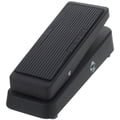
 Dunlop Crybaby GCB95
Dunlop Crybaby GCB95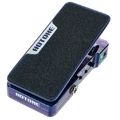
 Hotone Soul Press II
Hotone Soul Press II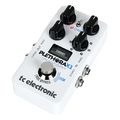
 tc electronic Plethora X1
tc electronic Plethora X1
 Vox VX V847A Wah
Vox VX V847A Wah

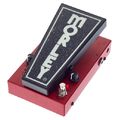
 Morley 20/20 Bad Horsie Wah
Morley 20/20 Bad Horsie Wah
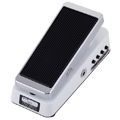
 Xotic XW-1 Wah
Xotic XW-1 Wah

 Fulltone Clyde Wah Deluxe
Fulltone Clyde Wah Deluxe

 Ibanez WH10V3 Wah Pedal
Ibanez WH10V3 Wah Pedal
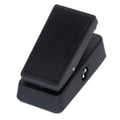

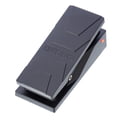
 Boss PW-3 Wah Pedal
Boss PW-3 Wah Pedal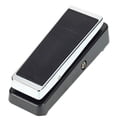
 Real McCoy Custom RMC10 Wah Pedal
Real McCoy Custom RMC10 Wah Pedal

